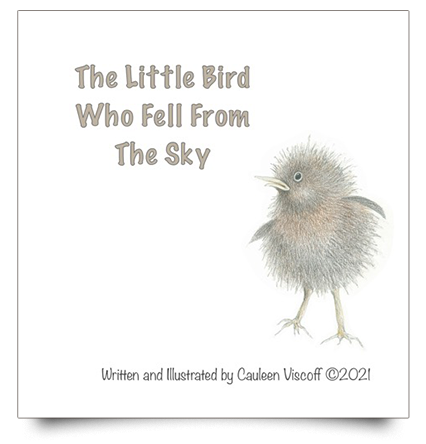I’d love to connect with you! Sign up for my monthly newsletter, "Garden Bliss & Blunder”
TREES and SHRUBS
Trees and shrubs are often the last thing we include in our garden planning or design, but they should be the first.
They create the structure and framework of our gardens. Trees are the bones and shrubs will make the rest of the garden come together..
A Garden Design will also include shrubs, hardscaping (stones and fences) along with colour in flowers and accessories.
A landscaper may design and plant trees or shrubs, but we are the ones who must care for, prune and water them.
One way to decide how to choose a tree or a shrub is to see how they are shipped - some come in pots, some bare root and others will be in a root-wrapped ball with wire and burlap.
See PLANTING TREES to see more
Use trees as a focal point, a way to divide garden spaces by stopping the eye from seeing all the garden at once... and trees will create shade where there is none.
Use a tree like a RUBY FALLS REDBUD to stop the eye and give the impression of garden rooms.
SEE the story of our REDBUD TREE
CHOOSING TREES or SHRUBS
Do you have a BLACK WALNUT TREE either in your yard or a neighbour's?? Read this if you do, or before you plant one .
Perhaps you need some privacy - when you sit outside in the summer, or privacy all year.
An evergreen hedge (like Eastern White Cedar) will be green all year and will need to be pruned at least once a year.
This hedge is about 20 feet tall and gives the garden both wind protection and privacy. The large overhanging tree in the top left is a Black Walnut.
HEDGES
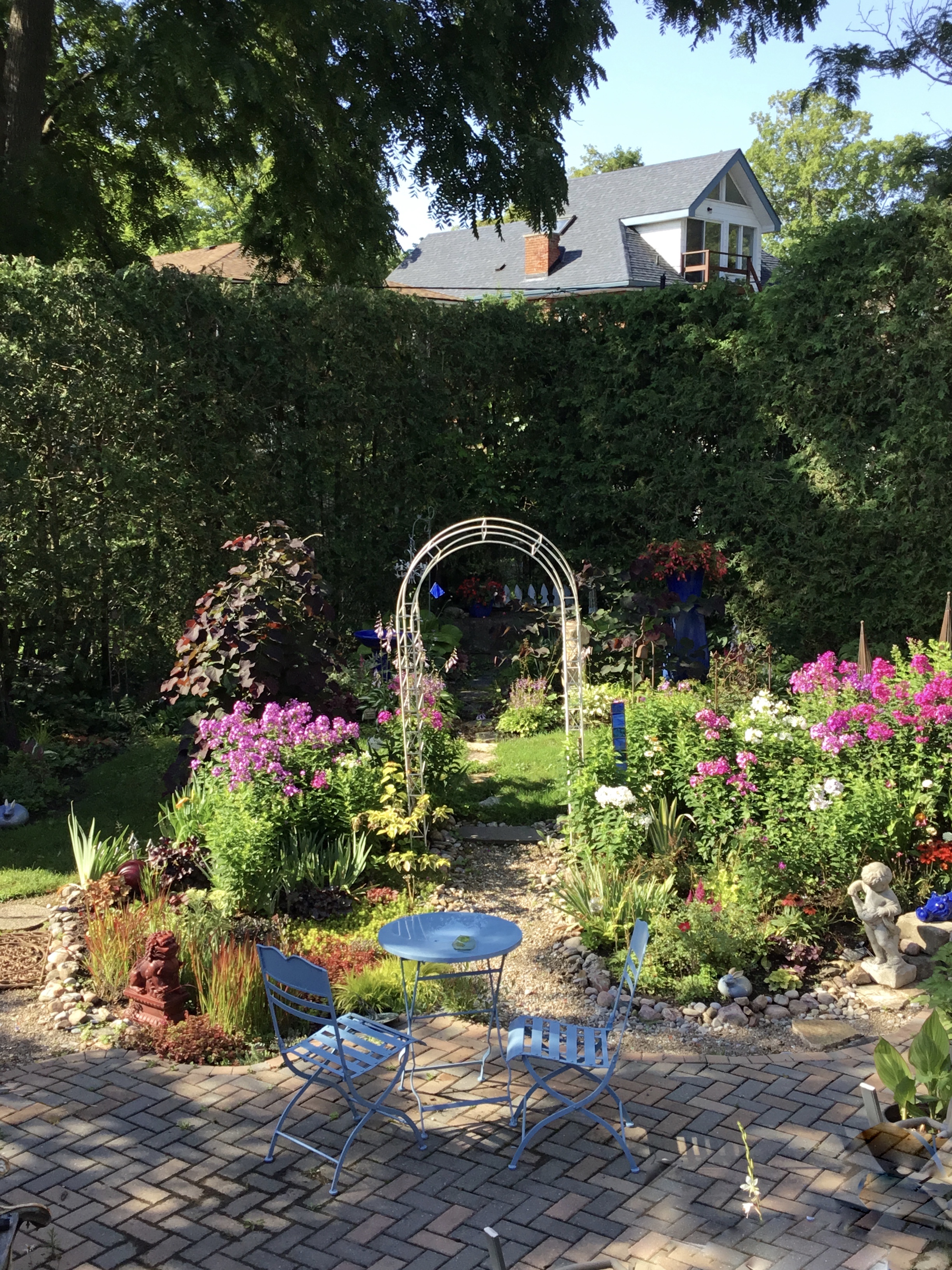 Cedar Hedge
Cedar Hedge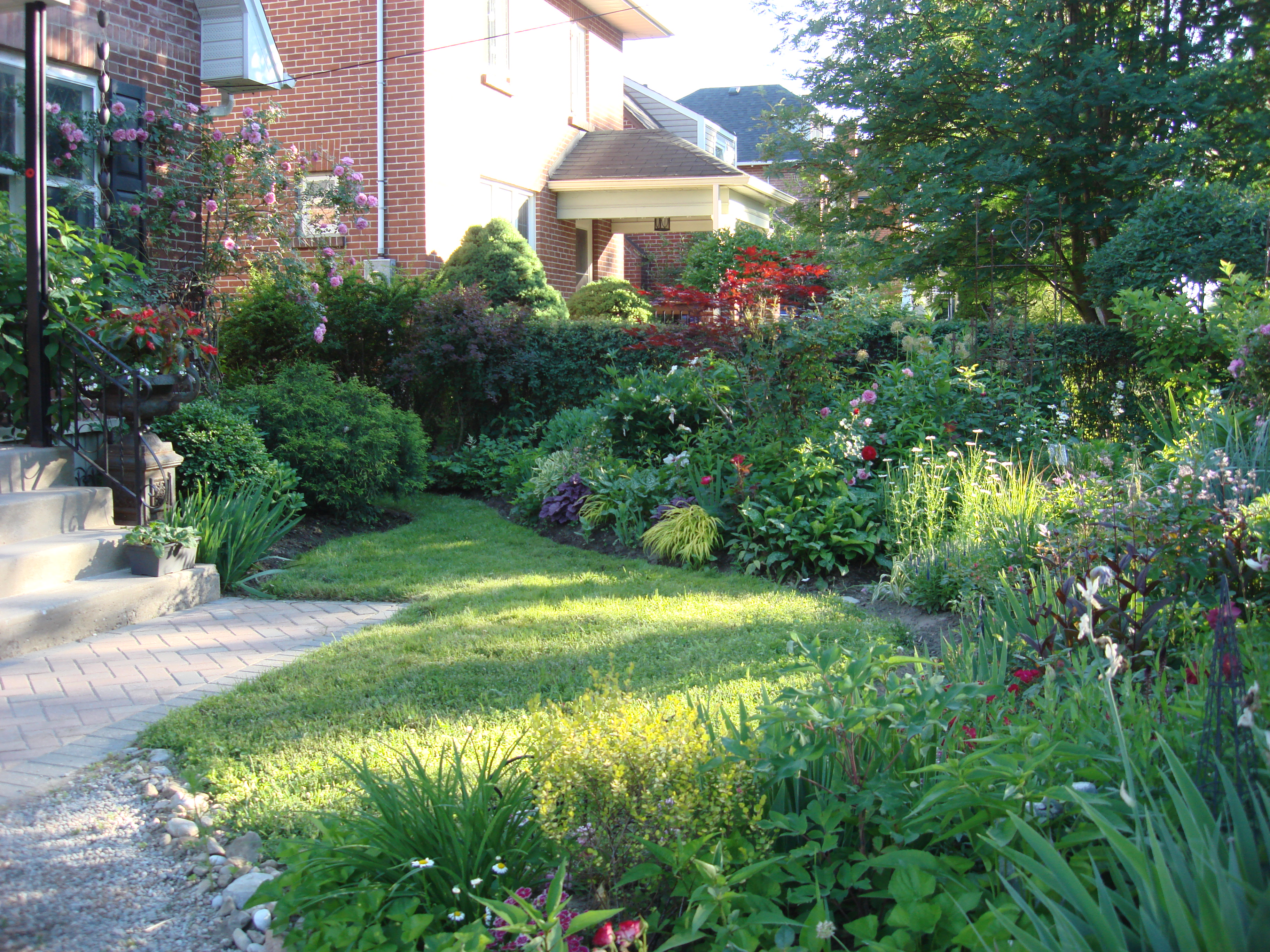 Trees and Shrubs
Trees and ShrubsHedges can provide a barrier or a border for your garden... keeps small children and pets (sometimes) contained. Trees and shrubs can also provide a place for your eyes to rest and keep them in your garden.
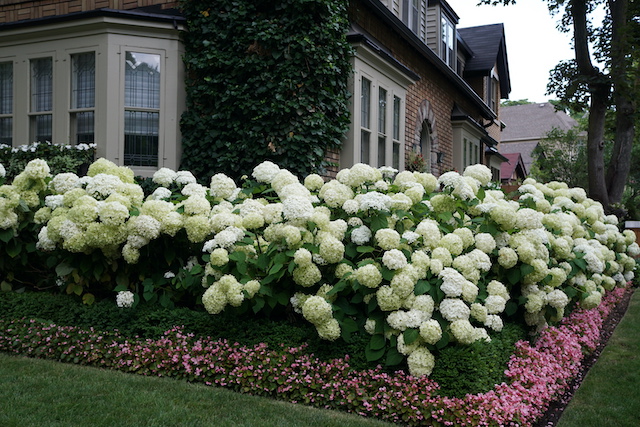 Annabelle Hydrangeas-photo Ron Sheldrick
Annabelle Hydrangeas-photo Ron SheldrickSometimes a deciduous shrub will provide gorgeous summer interest even if it is bare in the winter.
PLANTING TREES is both easy and complicated. If you plant them knowing why and how they need to be planted a certain way, your trees will thrive.
And once you plant them, continued success in in their pruning.
A good reason to choose wisely.... can you do it yourself?
Do you have the time or skill?
Pruning is a bit of an art. But there is a science to it too.
Follow the steps here and take your time. You can do this and make your trees happy and fruitful.
The great French Marshal, Lyautey asked his gardener to plant a tree for him. When the gardener said the tree would never mature for at least 100 years, the Marshal told him to hurry and plant it.
So, plant a tree under which you will never sit - a tall order requiring more than a little patience.
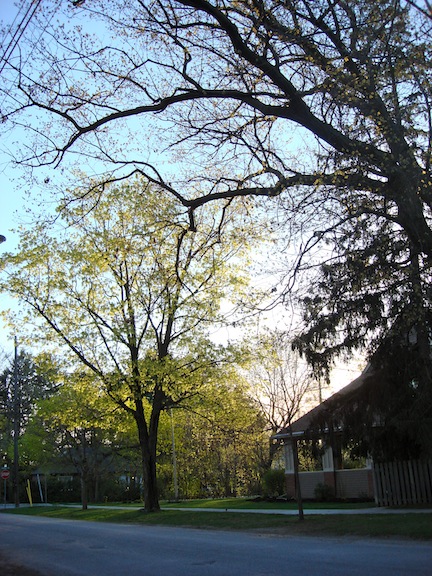 Mature Trees
Mature TreesThe benefits of trees outweigh the time we wait for them to grow.
Always plant the largest tree your budget will allow.
DID YOU KNOW?
The US forest service determined the annual value for a tree in the 1980’s (including its initial cost) was about $275.00 but over the life of that same tree, that value would be equal to about $58,000. In 2013, that would have translated to almost $125,000. Who knew?
For every ton of wood that grows in that tree, a ton and a half of CO2 is sucked out of the air and more than a ton of oxygen put back in. In 50 years, that oxygen would be worth more than $30,000 and that same tree could recycle over $35,000 of water, cleaning up over $60,000 worth of air pollution. That is incredible.
We also rely on trees for shade, (imagine reducing A/C costs !); they muffle street sounds, slow or prevent erosion; their canopy and root system filters storm water and best of all, they are beautiful.
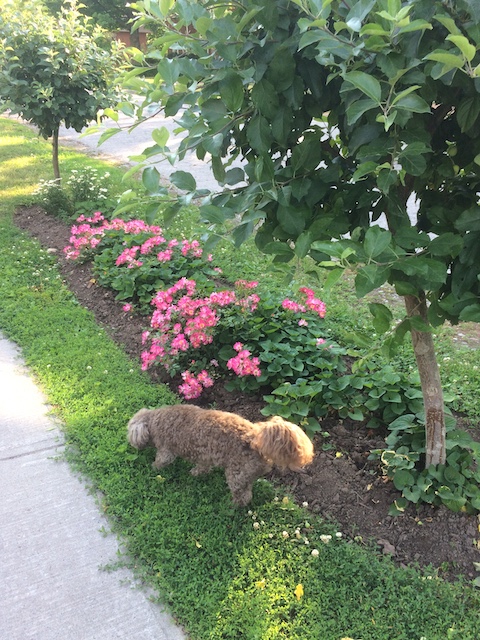 Lucy and the Rose Hedge on boulevard
Lucy and the Rose Hedge on boulevard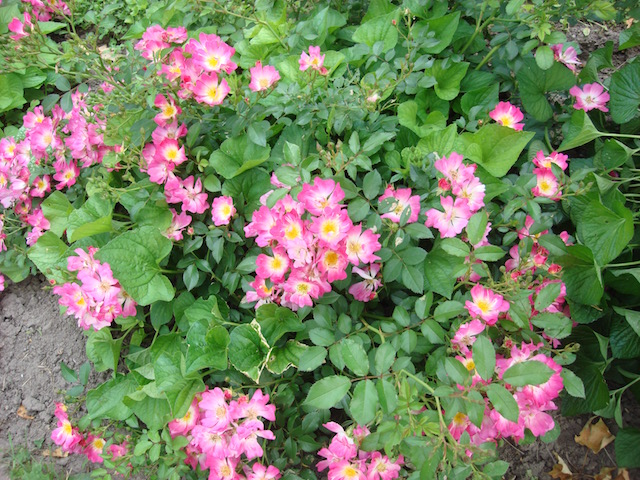 Drift Roses in hedge
Drift Roses in hedge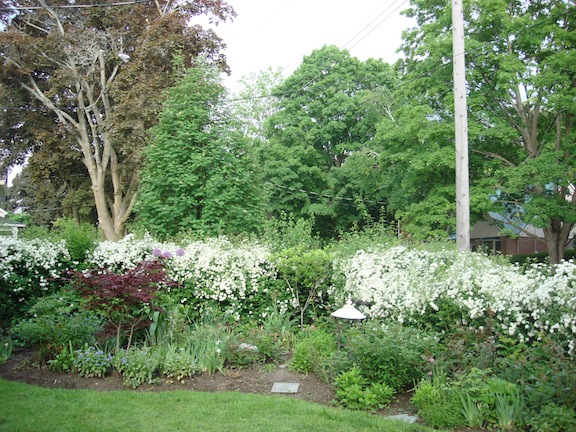 Spirea Hedge
Spirea HedgeA flowering (deciduous) shrub like Spirea, can make a glorious hedge. This one borders the street and does need regular pruning but worth the effort
Look at the different sizes of each of the trees above - the dark-leaved one on the left, is a mature Norway Maple (Acer platanoides) and about 35 to 40 years old. The Sugar Maple (Acer saccharum) on the far right is about 25 to 30 years old, but will outlast the Norway by at least 20 years.
It pays to know your trees!
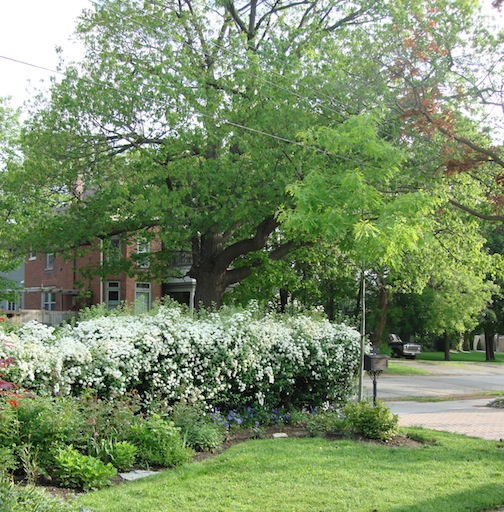 Old and young White Oak Trees
Old and young White Oak TreesAbove are two oak trees - White Oak (Quercus alba).
The one in the background is close to 100 years old while the one by the hedge is about 10 years old.
Oaks grow much slower, but will live to well over 100 years in ideal conditions.
CONSIDERATIONS for CHOICE
There are many Trees and Shrubs to choose from:
Consider these:
Zone
What look you want
Size of your garden and size of mature tree or shrub
The amount of care it needs - can you do it or do you need help?
What shape, leaf colour you prefer
Evergreen or deciduous?
How it will look in each season.
And think outside the box, but not always outside the zone.
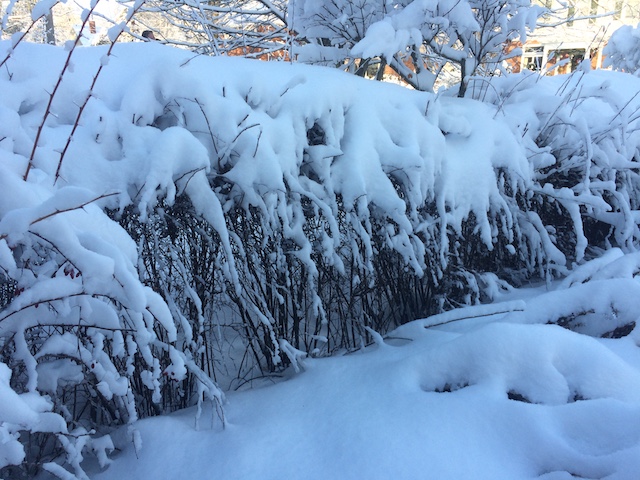 Spirea Hedge in Winter
Spirea Hedge in WinterCHOOSING TREES
PLANTING TREES
PRUNING TREES
.


